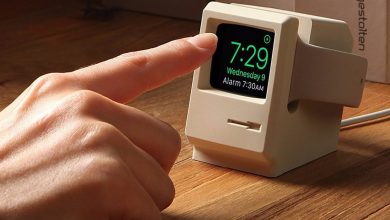M2 versus M3: how the new MacBook Pros compare

[ad_1]
In addition to a new iMac, Apple announced new M3-powered versions of the 14- and 16-inch MacBook Pro during its “Scary Fast” event on Monday. The new laptops can be configured with either the M3, M3 Pro, or M3 Max chip, all of which should offer larger performance gains than the last-gen M2 chip. Each MacBook Pro is currently available to preorder online ahead of its release date in November, with the M3 and M3 Pro models due to arrive on November 7th, while the M3 Max will ship later.
If you’re wondering how the new laptops compare with the M2 models on paper, we’ve rounded up everything we know so far based on specs and statements from Apple. Stay tuned as well for our full reviews, in which we’ll let you know how well the laptops truly stack up in reality against Apple’s claims.
First, the MacBook Pro pricing structure has changed now that Apple’s dropped the $1,299 Touch Bar-equipped 13-inch M2-powered MacBook Pro from its lineup. Before, the 14-inch model only came with Pro and Max-series chips and started at $1,999. This time, though, the base 14-inch laptop arrives with the M3 chip, half the RAM, 4TB less storage, and fewer GPU and CPU cores, lowering its price to $1,599. Thus, it is now the new entry-level MacBook Pro, one that offers a longer battery life, a better display, MagSafe charging, and no controversial Touch Bar.
In addition, the gray laptop in the Pro and Max series has been replaced by a black shade, which Apple says is built with material that should reduce fingerprints. (You can also still get it in silver as well.) The base 14-inch model, however, doesn’t come in black — you can buy it in gray and silver.
Otherwise, though, the MacBook Pros are very similar in design to their predecessors. For example, all share the same Liquid Retina XDR displays. The 14-inch Pro continues to feature a maximum resolution of 3024 x 1964, while the 16-inch version has a 3456 x 2234 resolution. They also retain the same port selection, offering two or three USB-C ports (depending on which size you buy), in addition to an SD card reader, an HDMI port, and a 3.5mm audio jack.
Beyond price and some aesthetic changes, though, the real changes take place under the hood. Unified memory on the Pro and Max chips have increased, for example. The M3 Pro chips now support up to 36GB of RAM, a small increase from the M2 Pro’s 32GB maximum. Meanwhile, the M3 Max boasts up to 128GB of RAM as opposed to the previous 96GB, which is a first for an Apple laptop.




